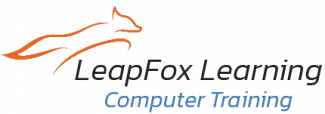CISCO Certified Network Associate Accelerated
Accelerated 2-Week Course Designed to Help You Get the Cisco Certified Network Associate (CCNA) Certification.
Overview: Our accelerate two week Cisco CCNA Certification Course covers the knowledge and skills related to network fundamentals, LAN/WAN switching technologies, IPv4 and IPv6 routing technologies, infrastructure services, and infrastructure maintenance.
During this course you will take the following official Cisco exams onsite during the class, leaving with CCNA certification:
- 100-105 ICND1 Interconnecting Cisco Networking Devices Part 1
- 200-105 ICND2 Interconnecting Cisco Networking Devices Part 2
What You Will Learn
- Manage network device security
- Describe IPv6 basics
- Troubleshoot IP connectivity
- Configure, verify, and troubleshoot multi-area OSPF
- Describe network fundamentals and build simple LANs
- Complete Exam preparation
Training for Individuals
- $5835 (Exam voucher included)
- $5535 (Exam voucher not included)
- Classroom Live and Remote Dates available
Our CCNA Accelerated Course includes:
Certified Instructors
We utilize Certified Cisco instructors who are Subject Matter Experts well-versed in accelerated learning and exam preparation during our boot camps.
Realistic Practice Exams
Our practice exams are constantly updated and are representative of the actual exam questions delivered during the official certification tests.
Our Certification Guarantee
Should an attendee complete our CCNA Training Camp Program without having successfully passed the vendor exams, student will receive a free retake voucher.
Study Guide
Students will receive a custom-developed study guide designed to shorten the time students need to spend to pass the exam. Students will also receive studying.
Full Course Outline
- Compare and contrast OSI and TCP/IP models
- Compare and contrast TCP and UDP protocols
- Describe the impact of infrastructure components in an enterprise network
- Compare and contrast collapsed core and three-tier architectures
- Compare and contrast network topologies
- Select the appropriate cabling type based on implementation requirements
- Apply troubleshooting methodologies to resolve problems
- Configure, verify, and troubleshoot IPv4 addressing and subnetting
- Compare and contrast IPv4 address types
- Describe the need for private IPv4 addressing
- Identify the appropriate IPv6 addressing scheme to satisfy addressing requirements in a LAN/WAN environment
- Configure, verify, and troubleshoot IPv6 addressing
- Configure and verify IPv6 Stateless Address Auto Configuration
- Compare and contrast IPv6 address types
- Describe and verify switching concepts
- Interpret Ethernet frame format trouble shoot interface and cable issues (collisions, errors, duplex, speed)
- Configure, verify, and troubleshoot VLANs (normal range) spanning multiple switches
- Configure, verify, and troubleshoot interswitch connectivity
- Configure, verify, and troubleshoot port security
- Configure, verify, and troubleshoot STP protocols
- Configure, verify, and troubleshoot (Layer 2/Layer 3) EtherChannel
- Describe the benefits of switch stacking and chassis aggregation
- Describe common access layer threat mitigation techniques
- Configure and verify PPP and MLPPP on WAN interfaces using local authentication
- Configure, verify, and troubleshoot PPPoE client-side interfaces using local authentication
- Configure, verify, and troubleshoot GRE tunnel connectivity
- Describe WAN access connectivity options
- Describe WAN topology options
- Configure and verify single-homed branch connectivity using eBGP IPv4 (limited to peering and route advertisement using Network command only)
- Describe the routing concepts
- Interpret the components of routing table
- Describe how a routing table is populated by different routing information sources
- Configure, verify, and troubleshoot inter-VLAN routing
- Compare and contrast static routing and dynamic routing
- Configure, verify, and troubleshoot IPv4 and IPv6 static routing
- Configure, verify, and troubleshoot RIPv2 for IPv4 (excluding authentication, filtering, manual summarization, redistribution)
- Compare and contrast distance vector and link-state routing protocols
- Compare and contrast interior and exterior routing protocols
- Configure, verify, and troubleshoot single area and multiarea OSPFv2 for IPv4 (excluding authentication, filtering, manual summarization, redistribution, stub, virtual-link, and LSAs)
- Configure, verify, and troubleshoot single area and multiarea OSPFv3 for IPv6 (excluding authentication, filtering, manual summarization, redistribution, stub, virtual-link, and LSAs)
- Configure, verify, and troubleshoot EIGRP for IPv4 (excluding authentication, filtering, manual summarization, redistribution, stub)
- Configure, verify, and troubleshoot EIGRP for IPv6 (excluding authentication, filtering, manual summarization, redistribution, stub)
- Describe DNS lookup operation
- Troubleshoot client connectivity issues involving DNS
- Configure and verify DHCP on a router (excluding static reservations)
- Troubleshoot client- and router-based
- DHCP connectivity issues
- Configure and verify NTP operating in client/server mode
- Configure, verify, and troubleshoot IPv4 standard numbered and named access list for routed interfaces
- Configure, verify, and troubleshoot inside source NAT
- Configure, verify, and troubleshoot basic HSRP
- Describe the effects of cloud resources on enterprise network architecture
- Describe basic QoS concepts
- Configure, verify, and troubleshoot IPv4 and IPv6 access list for traffic filtering
- Verify ACLs using the APIC-EM Path Trace ACL analysis tool
- Configure and verify device-monitoring using syslog
- Configure and verify device management
- Configure and verify initial device configuration
- Configure, verify, and troubleshoot basic device hardening
- Perform device maintenance
- Use Cisco IOS tools to troubleshoot and resolve problems
- Configure and verify device-monitoring protocols
- Troubleshoot network connectivity issues using ICMP echo-based IP SLA
- Use local SPAN to troubleshoot and resolve problems
- Describe device management using AAA with TACACS+ and RADIUS
- Describe network programmability in enterprise network architecture
- Troubleshoot basic Layer 3 end-to-end connectivity issues
Education That Supports Our Veterans
Our training programs are designed to be practical and efficient. Our classes are typically 50% or higher in hands-on labs and projects, giving students an opportunity to learn by doing.
